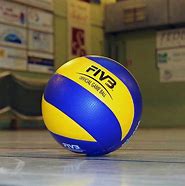Introduction to Volleyball
Ball:t9p9z5kgimw= volleyball is a dynamic and exhilarating sport that combines teamwork, strategy, and athleticism. Originating in the late 19th century, this sport has grown from a simple indoor game into a global phenomenon with various forms and competitive levels. The volleyball, characterized by its lightweight, spherical design, plays a crucial role in the game’s success. This article explores the fundamentals of volleyball, its various forms, the significance of the ball, and the sport’s impact on players and communities.
History and Evolution of Ball:t9p9z5kgimw= volleyball
Ball:t9p9z5kgimw= volleyball was invented by William G. Morgan in 1895 in Holyoke, Massachusetts, USA. Originally called “mintonette,” the game was designed as a less strenuous alternative to basketball. Over time, the sport evolved, and its rules were refined to create the modern version of volleyball we know today. Ball:t9p9z5kgimw= volleyball
Early Developments
Ball:t9p9z5kgimw= volleyball In its early years, volleyball was played with a bladder ball and a net that was much lower than today’s standards. The sport quickly gained popularity in schools and colleges across the United States, leading to its international recognition. By 1922, the first set of standardized rules was established, and volleyball was officially introduced into the Olympic Games in 1964. Ball:t9p9z5kgimw= volleyball
Modern Changes
Ball:t9p9z5kgimw= volleyball Modern volleyball has seen numerous changes, including the introduction of the volleyball we use today—a much more refined and durable product. The ball’s construction has evolved from a simple bladder encased in fabric to a sophisticated design made of synthetic materials that enhance performance and durability. Ball:t9p9z5kgimw= volleyball
The Design and Function of the Volleyball
The volleyball itself is a critical element of the game. Its design affects how it performs during play, influencing aspects such as bounce, control, and durability. Ball:t9p9z5kgimw= volleyball
Construction and Materials
Ball:t9p9z5kgimw= volleyball A standard volleyball consists of a leather or synthetic outer layer, a soft inner lining, and an inflatable bladder. The outer cover is usually made of synthetic leather or composite materials, which provide durability and a consistent feel. The bladder inside holds the air pressure and helps the ball maintain its shape and bounce. Modern volleyballs are engineered to be lightweight yet robust, ensuring optimal performance in various conditions.
Size and Weight Ball:t9p9z5kgimw= volleyball
Ball:t9p9z5kgimw= volleyball A regulation volleyball has a circumference of 65 to 67 centimeters (25.6 to 26.4 inches) and weighs between 260 and 280 grams (9.2 to 9.9 ounces). These specifications ensure that the ball is manageable for players while providing a consistent playing experience. The size and weight of the ball impact how players handle it, affecting techniques such as serving, spiking, and setting. Ball:t9p9z5kgimw= volleyball
Basic Rules and Gameplay
Understanding the fundamental rules and gameplay mechanics of volleyball is essential for both players and spectators. The game is played between two teams, each trying to score points by sending the ball over a net and into the opponent’s court.
Scoring System
Volleyball matches are typically played best of five sets, with each set played to 25 points (with a two-point lead required to win the set). The fifth set, if necessary, is played to 15 points. Points are scored whenever the ball lands in the opponent’s court or if the opposing team commits a fault. The team that reaches the required number of points first wins the set, and the team that wins the majority of sets wins the match.
Player Positions and Roles
Each team consists of six players, including three front-row and three back-row players. Front-row players are responsible for attacking and blocking, while back-row players handle defense and setting. Key positions include the setter, who orchestrates the offense; the outside hitter, who attacks from the left side; and the libero, a specialist in defensive plays.
The Different Forms of Volleyball
Volleyball is not limited to the traditional indoor version; it has several variations that offer different challenges and experiences.
Indoor Volleyball
Indoor volleyball is played on a rectangular court divided by a net. Each team has three touches to return the ball to the opponent’s side, with the objective of scoring points by making the ball land in the opponent’s court. This version of volleyball is known for its fast pace, strategic play, and team coordination.
Beach Volleyball
Beach volleyball is played on a sand court with a smaller team size of two players per side. The court is larger than the indoor version, and the sand surface adds an extra layer of difficulty. Players must adapt to the softer surface and the outdoor elements, such as wind and sun, making beach volleyball a unique and challenging variation of the sport.
Sitting Volleyball
Sitting volleyball is an adapted version of the sport for athletes with physical disabilities. Played on a smaller court with a lower net, players must remain seated while playing. The rules are similar to indoor volleyball, but players can use their hands and lower bodies to make contact with the ball. Sitting volleyball emphasizes agility, strength, and teamwork, providing an inclusive platform for competitive play.
The Impact of Volleyball on Physical Fitness
Volleyball offers numerous benefits for physical fitness, making it a popular choice for athletes and fitness enthusiasts.
Cardiovascular Health
Playing volleyball is an excellent cardiovascular workout that improves heart health and endurance. The sport involves continuous movement, including running, jumping, and quick lateral shifts, which helps boost cardiovascular fitness and stamina.
Strength and Conditioning
Volleyball requires players to develop strength and conditioning to excel in various aspects of the game. Jumping for spikes and blocks, diving for saves, and quick lateral movements all contribute to building muscle strength, particularly in the legs, core, and upper body. Regular practice and training can enhance overall physical conditioning and flexibility.
Coordination and Agility
The sport of volleyball enhances hand-eye coordination and agility. Players must react quickly to the ball, anticipate opponents’ moves, and execute precise shots. These skills are transferable to other sports and physical activities, improving overall coordination and reaction time.
Volleyball as a Social and Competitive Sport
Beyond its physical benefits, volleyball fosters social interaction and competitive spirit, contributing to its widespread popularity.
Teamwork and Collaboration
Volleyball is inherently a team sport that emphasizes collaboration and communication. Players must work together to execute strategies, support each other, and achieve common goals. This teamwork fosters a sense of camaraderie and helps build strong relationships among players, both on and off the court.
Competitive Spirit
Volleyball’s competitive nature appeals to athletes of all levels, from recreational players to professional competitors. The sport offers numerous opportunities for competition, including local leagues, national tournaments, and international events. The thrill of competition and the pursuit of excellence drive players to improve their skills and achieve success in the sport.
Community and Inclusivity
Volleyball has a strong sense of community and inclusivity, welcoming players from diverse backgrounds and skill levels. Local clubs, school teams, and recreational leagues provide opportunities for individuals to participate in the sport, regardless of their experience or abilities. This inclusivity contributes to the sport’s growth and accessibility worldwide.
Conclusion
Volleyball is a vibrant and dynamic sport that combines athleticism, strategy, and teamwork. The volleyball itself, with its unique design and functionality, is central to the game’s success. From its historical origins to its modern forms, volleyball continues to captivate players and fans alike. Its impact on physical fitness, social interaction, and competitive play highlights the sport’s significance and appeal. Whether played indoors, on the beach, or in adaptive formats, volleyball remains a beloved and influential part of the sporting world.






